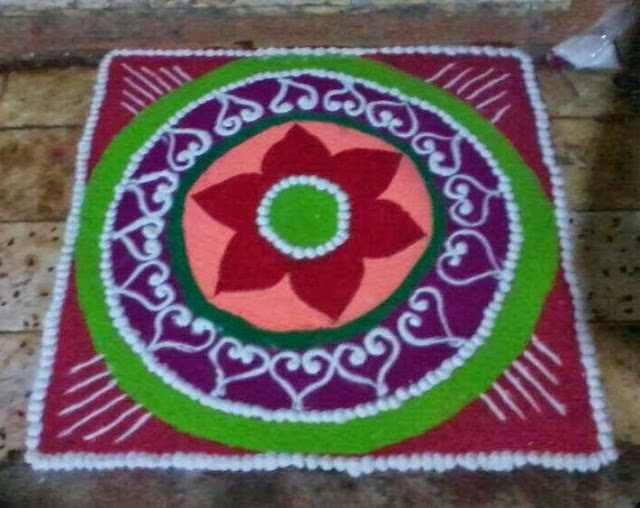Different Types of Rangoli Designs for festivals & Competitions
Rangoli is use to Decorate our house, pooja place shopes enterance etc etc.Some times it is also used in schools and colleges as a competition. They organise a Rangoli Competition in which participants use to make Rangoli designs in best way using so many different items like flower, dal,rice, floor, suji, etc etc to give best output.Rangoli means Rang-Goli = Colours which are use to fill in round shape. Usually Rangoli, Mandna,Chok Mandna are made in round shape on the floor ,as time is passing they are changing their shapes & place also.
Rangoli is use to Decorate our house, pooja place shopes enterance etc etc.Some times it is also used in schools and colleges as a competition. They organise a Rangoli Competition in which participants use to make Rangoli designs in best way using so many different items like flower, dal,rice, floor, suji, etc etc to give best output.Rangoli means Rang-Goli = Colours which are use to fill in round shape. Usually Rangoli, Mandna,Chok Mandna are made in round shape on the floor ,as time is passing they are changing their shapes & place also.
The patterns are typically created with materials including colored rice, dry flour, sand or even flower petals. Similar practices are followed in different Indian states: in Tamil Nadu, there is Kolam; Mandana in Rajasthan; Chowkpurna in Northern India; Alpana in West Bengal; Aripana in Bihar; chowk pujan in Uttar Pradesh; and others.
The purpose of rangoli is decoration, and it is thought to bring good luck. Design depictions may also vary as they reflect traditions, folklore and practices that are unique to each area.
Over the years modern additions have been adopted. It is traditionally done by women. Generally, this practice is showcased during occasions such as festivals, auspicious observances, celebrations of marriages and other similar milestones and gatherings.
Rangoli designs can be simple geometric shapes, deity impressions, or flower and petal shapes, but they can also become very elaborate designs crafted by numerous people. The base material is usually dry or wet granulated rice or dry flour, to which sindoor, haldi and other natural colors can be added. Chemical colors are a modern variation.
Other materials include colored sand and even flowers and petals, as in the case of flower rangolis.
Other materials include colored sand and even flowers and petals, as in the case of flower rangolis.

























































